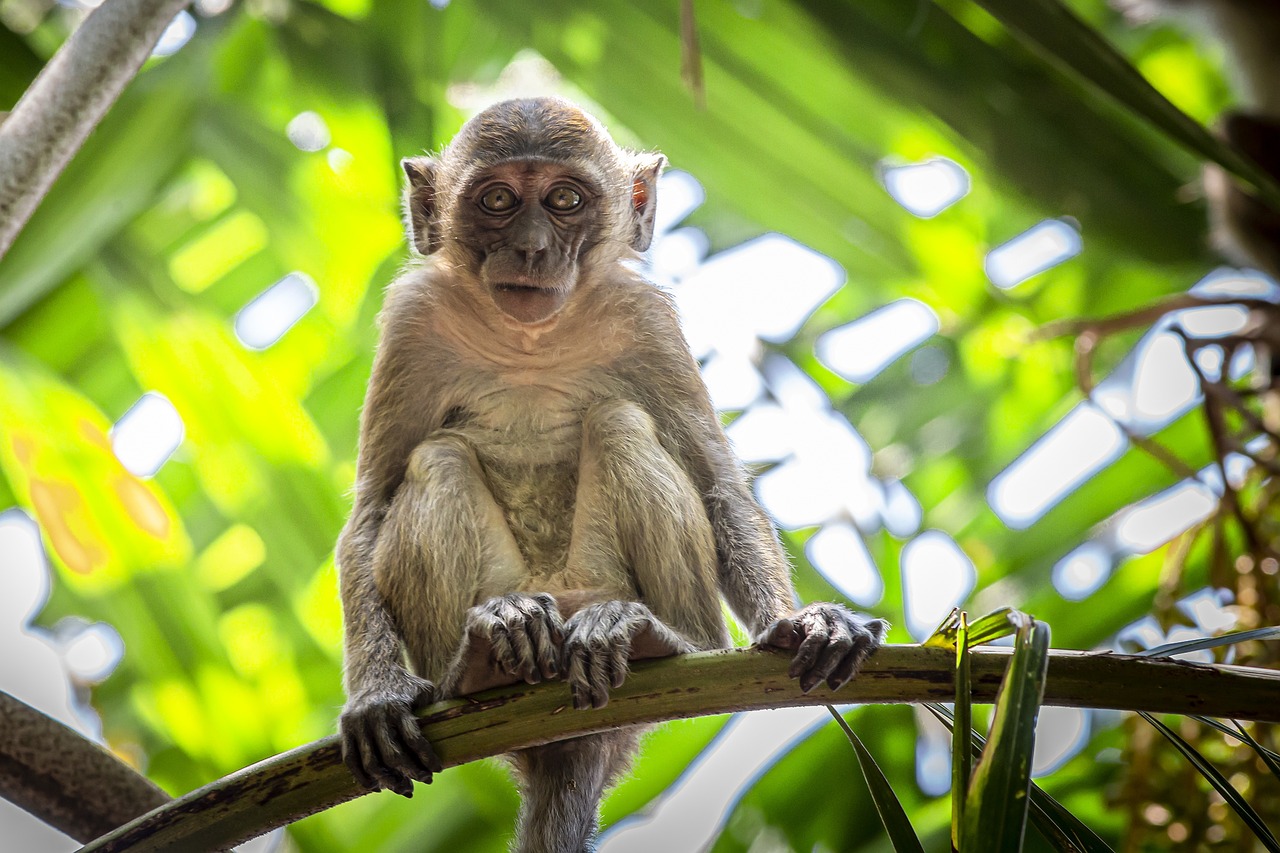Here’s a complete and richly detailed overview of the Crab-eating Macaque (Macaca fascicularis), one of Southeast Asia’s most widespread and ecologically adaptable primates:
🐒 Crab-eating Macaque (Macaca fascicularis)
Common Names
- Crab-eating macaque
- Long-tailed macaque
- Cynomolgus monkey
- Indonesian: Monyet ekor panjang
- Thai: Ling sam ling
- Malay: Kera ekor panjang
Taxonomy & Classification
- Kingdom: Animalia
- Phylum: Chordata
- Class: Mammalia
- Order: Primates
- Family: Cercopithecidae (Old World monkeys)
- Genus: Macaca
- Species: M. fascicularis
- Scientific name meaning:
“Fascicularis” means “bundled” or “banded,” likely referring to the macaque’s coat pattern or social grouping behavior.
Description & Identification
- Size:
- Males: 40–65 cm body length, tail 50–70 cm, weight 5–9 kg.
- Females: 38–55 cm body length, tail 40–65 cm, weight 3–6 kg.
- Body: Slender and agile, built for climbing and swimming.
- Tail: Exceptionally long — almost equal to or longer than body length, hence the name long-tailed macaque.
- Coloration:
- Fur ranges from grayish-brown to golden olive on the back, lighter on the underside.
- Face is pinkish or gray, often with a ridge of hair forming a crown or whiskered appearance.
- Facial features: Expressive eyes, flat nose, and bare muzzle typical of Old World monkeys.
Distribution
- Native range: Widespread throughout Southeast Asia, including:
- Thailand, Cambodia, Laos, Vietnam, Myanmar, Malaysia, Indonesia, and the Philippines
- Also native to southern China (Hainan Island) and Bangladesh (Sundarbans region)
- Introduced populations:
- Mauritius, Hong Kong, New Guinea, and various Pacific islands, due to human translocation.
- Preferred habitat:
- Coastal forests, mangroves, riverbanks, agricultural areas, and even urban environments.
- One of the few primates comfortable near human settlements.
Habitat & Ecology
- Highly adaptable to a variety of ecosystems:
- Mangroves and tidal zones: Excellent swimmers, known to dive for crabs and mollusks.
- Tropical rainforests and dry forests: Feed in trees and on the ground.
- Urban areas: Common in temples, parks, and cities across Southeast Asia.
- Often found near water, where it forages and cools off during the heat of the day.
Diet
- Omnivorous and opportunistic:
- Fruits and seeds: Primary food source.
- Leaves, flowers, and roots: Supplementary vegetation.
- Animal matter: Insects, frogs, small crustaceans (especially crabs), and bird eggs.
- Feeding behavior:
- Frequently forages in groups.
- Skilled at opening shells and washing food in water.
- In urban settings, known to steal food and scavenge human waste.
Behavior & Social Structure
- Diurnal: Active during daylight hours, resting in trees at night.
- Social organization:
- Lives in large multi-male, multi-female groups of 10–80 individuals.
- Female-dominated hierarchies; females remain in natal groups, while males disperse.
- Communication:
- Wide range of vocalizations, facial expressions, and gestures.
- Grooming plays a key role in social bonding.
- Intelligence:
- Demonstrates tool use, such as using stones to crack nuts or shells.
- Observed washing food or dipping it in water before eating.
Reproduction
- Breeding: Non-seasonal in equatorial regions; seasonal in temperate zones.
- Gestation: About 162–193 days (~6 months).
- Litter size: Usually one infant per birth.
- Infant care:
- Newborns cling to the mother’s belly.
- Weaning occurs at around 10–12 months.
- Juveniles remain close to the mother’s social group for protection.
- Sexual maturity:
- Females: ~3–4 years
- Males: ~5–6 years
Predators
- Natural predators include large birds of prey, pythons, crocodiles, and leopards.
- In human-dominated areas, dogs and humans pose major threats.
Conservation Status
- IUCN Red List: 🟢 Least Concern (LC)
- Population trend: Stable in many regions but declining locally due to:
- Habitat destruction
- Hunting and capture for the pet trade and biomedical research
- Conflict with humans in urban and agricultural zones
- Protected areas: Occur in many national parks across Southeast Asia.
Cultural and Scientific Importance
- Sacred in Hindu and Buddhist cultures (e.g., “temple monkeys” in Thailand and Bali).
- Widely used as a biomedical model species, known as the “cynomolgus monkey.”
- Central to studies on social behavior, cognition, and zoonotic diseases (e.g., herpes B virus).
Interesting Facts
- Named “crab-eating macaque” because coastal populations are often seen catching and eating crabs and shellfish.
- Excellent swimmers and divers — can swim over 500 meters between mangrove islets.
- Populations exhibit cultural behaviors, with local groups developing distinct feeding habits or grooming rituals.
- One of the most successful primates in adapting to human presence.
Visited 894 times, 9 visit(s) today
Views: 1266
Subscribe to the newsletter:
